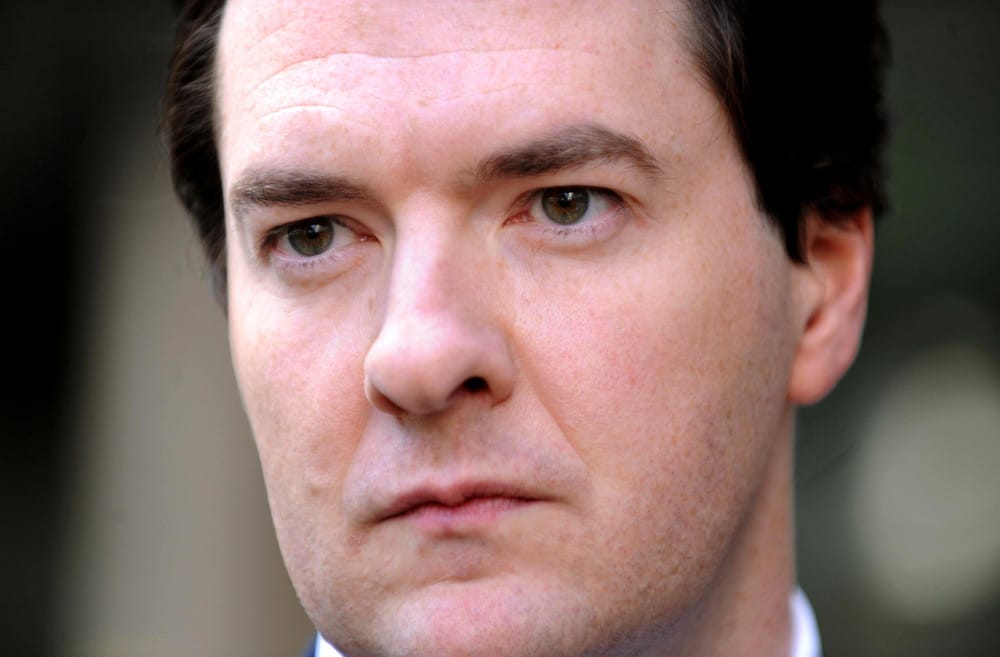The End of the Great Recession?
The ‘Great Recession’ is over. To quote the Times: ‘It’s official’. This verdict, coming as it does from ‘one of the country’s leading economic bodies,’ is very impressive no doubt.

The ‘Great Recession’ is over. To quote the Times: ‘It’s official’. This verdict, coming as it does from ‘one of the country’s leading economic bodies,’ is very impressive no doubt. The National Institute of Economic and Social Research (NIESR) (from whence the claim), is an institution blessed with an authoritative name and steeped in history. In fact, we learn from their website that they are ‘Britain’s longest established independent research institute’ … Sorry, ‘independent’? That sounds very, umm, ‘official’.
Still, now that the ‘Great Recession’ is ‘officially’ over, we should probably take a moment to think about how we got into it in the first place, and why we are now getting out of it. At first we were told that the recession was really a fable about greed and economic hubris, hedonistic bankers and cold blooded economists. Typical here were the words of Chris Peck, head of Risk Trading at the Tokyo Branch of Deutsche Bank: ‘Risks are sexy’. Harvard educated bankers assured us that financial collapse was a logical or scientific impossibility, rather like squaring the circle or sending information faster than the speed of light. Making money was the new cocaine, and it bought, well, quite a lot of real cocaine. Influential partisans of this view include Pope Benedict XVI and, judging by ‘The Wolf of Wall Street’, Martin Scorsese.
Slightly more useful than this kind of cheap didacticism, is a basic economic analysis of the immediate causes of the recession. Simply put, deregulation of financial markets – notably Clinton’s repeal of the 1933 Glass-Steagall act in 1999 – was the culmination of long trends towards ‘financialization’ of the American economy during the latter half of the 20th century, an important trend that I shall discuss in an article next week. Following deregulation, trade in various new financial products – ‘securitised debt products’ such as ‘Asset-Backed Securities’, composite bonds made from thousands of pooled loans, or ‘derivatives’ such as the infamous ‘Credit Default Swaps’ – took off massively, facilitated as they were by the development of new financial securities, which were alleged to reduce the risk of financial collapse. One type of security central to the 2008 crisis, were the notorious ‘Collateralised Debt Obligations’, or CDOs. These were ‘structured’ composite loans, arranged in ‘trenches’, that is pools of similar risk loans, which were made safer by, for instance, guaranteeing that losses made on senior (low risk) tranches would only be borne after the owners of more junior tranches had absorbed these losses.
Ironically enough, it was the very security of the new products which encouraged the new trade in high risk loans such as sub-prime mortgages, and it was the same security which made these new products so very ubiquitous. Come the collapse of the US housing market in 2006, and a large round of sub-prime mortgage defaults, the pervasive spread of the new products undermined this security. The sheer scale of the market in CDOs brought on the ‘Credit Crunch’ as the predictable losses on junior tranches pushed losses further up this pyramid of risk. Meanwhile derivative insurance markets – crucial here is the opaque market in CDSs, a ‘derivative’ whereby the seller agrees to compensate the buyer in the event of a loan default – exacerbated the problem as banks without credit called on other banks without credit to compensate their bad loans. There followed a brief ‘Keynesian Spring’ to modest effect. Little of the debt forgiveness programs and stimulus packages went to low paid workers or smaller businesses which might possibly have encouraged consumption and in turn manufactures. Instead, with financial practices largely unchanged, newfound bank liquidity aided by extensive quantitative easing programs and hilariously low interest rates, growth in the immediate aftermath of the 2008 crisis was largely artificial, and indeed come the various debt crises across European periphery (the ‘GIPSY club’, plus Cyprus and Iceland) growth declined in the ‘centre’ (UK, Gemany, France). Germany, hit the softest, augmented its traditionally dominant position in the EU, allowing it to enforce crippling austerity measures in other countries. Even if austerity is effective economic policy, and I hope to show that it is not below, we need to think twice about an economic policy which has done nothing to decrease unemployment with all its crippling social effects, and has inspired a spate of self-immolation protests.
The UK has not been unaffected in all this. A conspicuous increase in unemployment and the use of food banks, a decrease in real wages, output and manufactures have all been common headline tropes over the past few years. So it is welcome news if the ‘Great Recession’ is over. Yet if we actually look at the NIESR report, the picture is not quite as rosy as some would like to make out.
We learn that NIESR have decided that the recession is over as GDP figures are likely to exceed 2008 levels within the next few months. Data from the Office for National Statistics suggests otherwise, but even if we accept NIESR’s figures, GDP per capita will ‘not exceed [its previous peak] before 2017’. Real wages are 6% below 2009 levels, and are not expected to break even until 2018. Positively, the report sees little evidence for domestic inflation, likely to remain close to the 2% target, but it warns that ‘considerable uncertainty surrounds monetary policy on several dimensions.’ Following current government plans, public sector borrowing is likely to decline, and reach surplus in 2018 with the net debt to GDP ratio peaking sometime 2015-16. The UK’s trade performance ‘remains disappointing’. Employment has increased (by 1%) but as a corollary, and crucially, productivity growth has fallen sharply. Incidentally, the report claims that ‘ultimately productivity is the main, if not the only, driver of real wages and overall prosperity.’
This is basis for ‘George’ Gideon Osborne’s great recovery? Real wages are still lower than in 2008, GDP per capita is still lower than in 2008, while following current plans the net debt to GDP ratio may not peak for another 2 years. Reducing this ratio, incidentally, was supposed to be the centrepiece of Tory economic policy – unless I misunderstood and they simply wanted to reduce the ‘deficit’ in absolute terms, at whatever cost to GDP. Now let us compare the record of austerity in Britain, where it has been most successful, to the US, which did not opt for austerity economics: US GDP exceeded its 2008 position around the time the Tories were entering office and has been growing since then. According to World Bank data, GNI per capita exceeded its 2008 level in 2011. Similarly unemployment is as low as it has been since 2008, although it is likely that much of this is due to a reduction in the labour participation rate. US economic policy has not been a resounding success, but focus on growth related policies (mainly creating jobs) has allowed the US to give the initially artificial growth some substantial basis and led to sustained economic achievements above and beyond the most successful European economies.
The report also fails to mention a key aspect of this ‘recovery’. Britain and the US are in the middle of a stock-market boom of historic proportion. For instance the closing index of the FTSE 100 is, at the time of writing, 6851, higher than the apex of the pre-2008 boom (6730) and just shy of the dotcom bubble high of 6930. In the US the S&P 500 could well pass an unprecedented 1900 by the time this article gets to print. To put this into perspective, the dotcom bubble milestone was 1500, while the 2007 bull market failed to breach 1600. According to a recent article in the Guardian by Cambridge economist Ha-Joon Chang, ‘This is definitely the biggest stock market bubble in modern history’.
Why is this worrying? Because as Ha-Joon Chang also notes, there seems to be no reason for this massive growth. Macroeconomic growth stats have remained modest everywhere, while in Britain output is still lower than in 2008. Even more eerily, the bullshit that you would expect to accompany a record bull market has been conspicuously absent. No false claims about the revolutionary impact of new information technologies; no lies about the newfound Shangrila of risk management through financial innovation. Just silence.
When this bubble bursts – and it will burst – we will wake up to an economic system largely the same as it was 6 years ago. The most obvious lessons of 2008 have not been learnt, with financial market regulation largely superficial when it was put in place at all. Certainly, none of the more deep-seated structural issues have been addressed, if even mentioned. I intend to address some of these in an article next week. And when we do wake up to an economic system the same as 6 years ago, I am sufficiently determinist to predict largely similar results.







